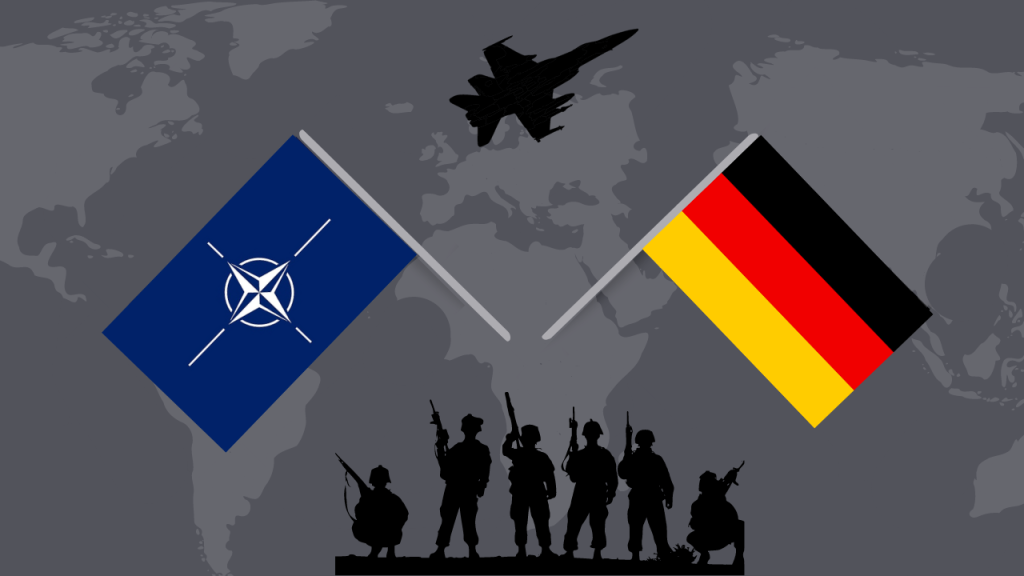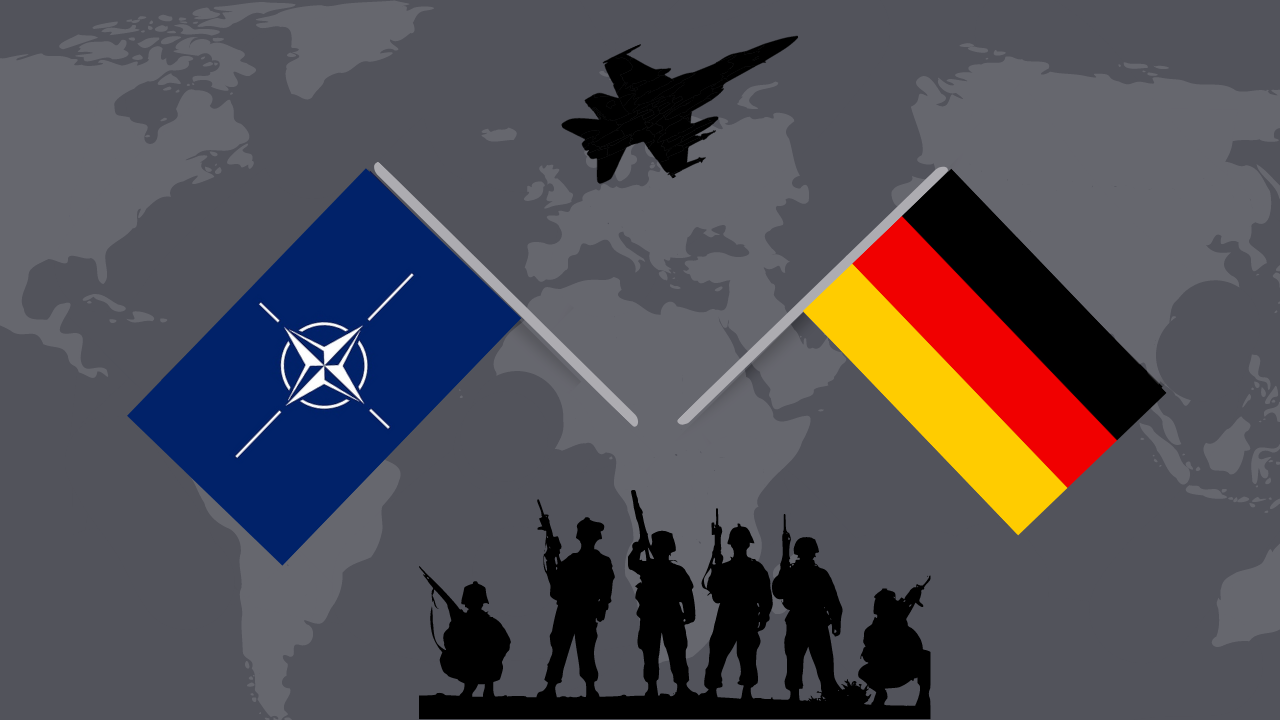
In our article, we try to understand why Germany could not reach the 2% military expenditure rate determined within the scope of NATO at the Wales Summit.
Written By; Kamile Şanlı – Aug 20, 2023
With the changing security environment after the end of the cold war, military spending rates of NATO allies were declining. On the other hand, the USA, which is the founding member and the most military spender of NATO, always continued to underline the necessity of increasing defense expenditures. Although it was decided at the Wales summit in 2014 that each of the NATO allies should allocate 2% of their GDP to defense expenditures, NATO members still struggle to achieve this rate or do not want to achieve this rate, as claimed for Germany.
First of all, the history of at least 2% of the spending of NATO allies acquired in 2014 dates back to the past. In 1978, a 3% increase in the expenditures of NATO allies was requested. Again in the 2000s, although it was discussed that the members should allocate 2% of their GDP to military expenditures, it was not concluded. (1) Perhaps another point we should mention may be related to the perceived security threat. Because we see that especially with Russia’s annexation of Crimea, the military/defense expenditures of the Baltic countries have increased within the scope of NATO. In other words, when we came to 2014, Russia’s annexation of Crimea scared everyone, at this point, the decision made at the Wales summit to allocate 2% of the GDP of each ally to military expenditures did not come as a surprise. In this context, the fact that the USA, which has contributed the most to NATO since its establishment, constantly warns countries that they should take responsibility, reflects a historical continuity. American President John F. Kennedy complained in the previous years that NATO members did not pay their share, and even threatened NATO countries with the withdrawal of troops from Germany, as we are used to from Trump. In the following years, Obama has often argued that the USA is the state that allocates the most budget for NATO’s military expenditures, and stated that other countries are insufficient. In the same way, during the Trump administration, the USA threatened NATO countries many times because they could not reach the 2% limit, and even targeted Germany directly from time to time. Likewise, perhaps the two most important reasons for Trump’s targeting of Germany here are that it is the EU’s largest economy and its military expenditures are indeed low.

As we can see in the graph, Germany has never been able to reach the 2% spending rate decided at the Wales summit in 2014, but has often faced aggressive reactions from Trump. Despite this failure, Germany has constantly set new and short-term targets. Although Germany has approached the 2% target since 2015, Germany could not reach the 2% target when the Merkel era ended. About three months after the current Chancellor of Germany, Olaf Scholz, took office on December 8, 2021, Russia launched a war against Ukraine. While the German Chancellor said that this was a turning point for the world, he announced that they had established a special fund of 100 thousand euros for the Bundeswehr on February 27, 2022, and that this fund would be used for investments and armament projects. (3)
We will all see if Germany will be able to reach the 2% target in the upcoming period, but in the graph you see above, the rate predicted by NATO for Germany is 1.57%. At this point, although Germany has announced that it will spend 100 thousand euros in military spending with a special fund, the modernization of weapons and tanks, which is perhaps the issue that Germany has been on the most since 2016, is a somewhat difficult process. According to some German political scientists, even with this special funding aid to the Bundeswehr, it is very difficult to reach NATO’s 2% target by 2024, 2025, because the new financial requirements in these years will change again. (4)
In addition, Germany encounters radical voices at some points in its domestic politics. For example, in 2018, the left-populist party Die Linke told the parliament that the 2% commitment should be abandoned, but the idea did not pass the parliament. (5) Likewise, the racist and radical AfD party, which received almost over 20% of the votes in today’s polls, continues to state that it is uncomfortable with NATO’s military presence, while defending policies such as Dexit. Although it is a remote possibility, I think, if the voices increase and “NATO loses its effectiveness in the EU, especially in Germany, who will fill the empty place of NATO?” This is another topic of discussion.
One of the problems, perhaps one of the complaints addressed by some authors, regarding Germany’s failure to reach the 2% rate is that due to Germany’s high GDP, it contributes more than most allies, even though it does not reach the 2% rate. (6) With this argument, perhaps what the authors are aiming for is regulation of the 2% rate. Also, lastly, I think it would be useful to underline the absence of sanctions for failing to reach the 2% expenditure rate and to make the reader agree.

In summary, NATO is an important organization that has been around for years, perhaps still standing strong. Even though there are crises at times and it is thought that “brain death has occurred”, as we have seen in the recent past, the continuation of the country’s desire to join NATO is one of the things that shows the importance of NATO today. However, the obligation of NATO allies to spend 2% on the military, which has a long history but was officially published in the final declaration in 2014, confronts countries sometimes as a challenge and sometimes as a convenience. At this point, dedicating 2% of GDP to military spending serves NATO’s most important articles: collective security. Although Germany has not been able to reach this rate for many years, Germany’s military power and geostrategic position within NATO cannot be denied.
Sources:
(1) Önder, H. (2022). NATO Üyelerinin %2’lik Savunma Harcama Hedefine Yakınsamasının Sınanması. Selçuk Üniversitesi Sosyal Bilimler Meslek Yüksekokulu Dergisi, 25 (2), 694-702.
(2) Internationale Politik, “Von Bremsern und Bürokraten”, Access: 15.08.2023, https://internationalepolitik.de/de/von-bremsern-und-buerokraten
(3) Euronews, “Almanya, savunma harcamaları için 100 milyar euroluk ‘özel fon’ kuruyor”, access: 09.08.2023, https://tr.euronews.com/2022/02/27/almanya-savunma-harcamalar-icin-100-milyar-euroluk-ozel-fon-kuruyor
(4) Internationale Politik, “Von Bremsern und Bürokraten”, Access: 15.08.2023, https://internationalepolitik.de/de/von-bremsern-und-buerokraten
(5) Tomáš Weiss (2019) Between NATO and a hard place: defence spending debate in Germany and Czechia, European Security, 28:2, 193-211
(6) Federal Academy for Security Policy | Security Policy, “Myths Surrounding the Two Percent Debate: On NATO defence spending”, Access: 09.08.2023, https://www.baks.bund.de/en/working-papers/2019/myths-surrounding-the-two-percent-debate-on-nato-defence-spending

"Kamile Şanlı is an undergraduate student in Political Science and International Relations at Ankara Yıldırım Beyazıt University."
